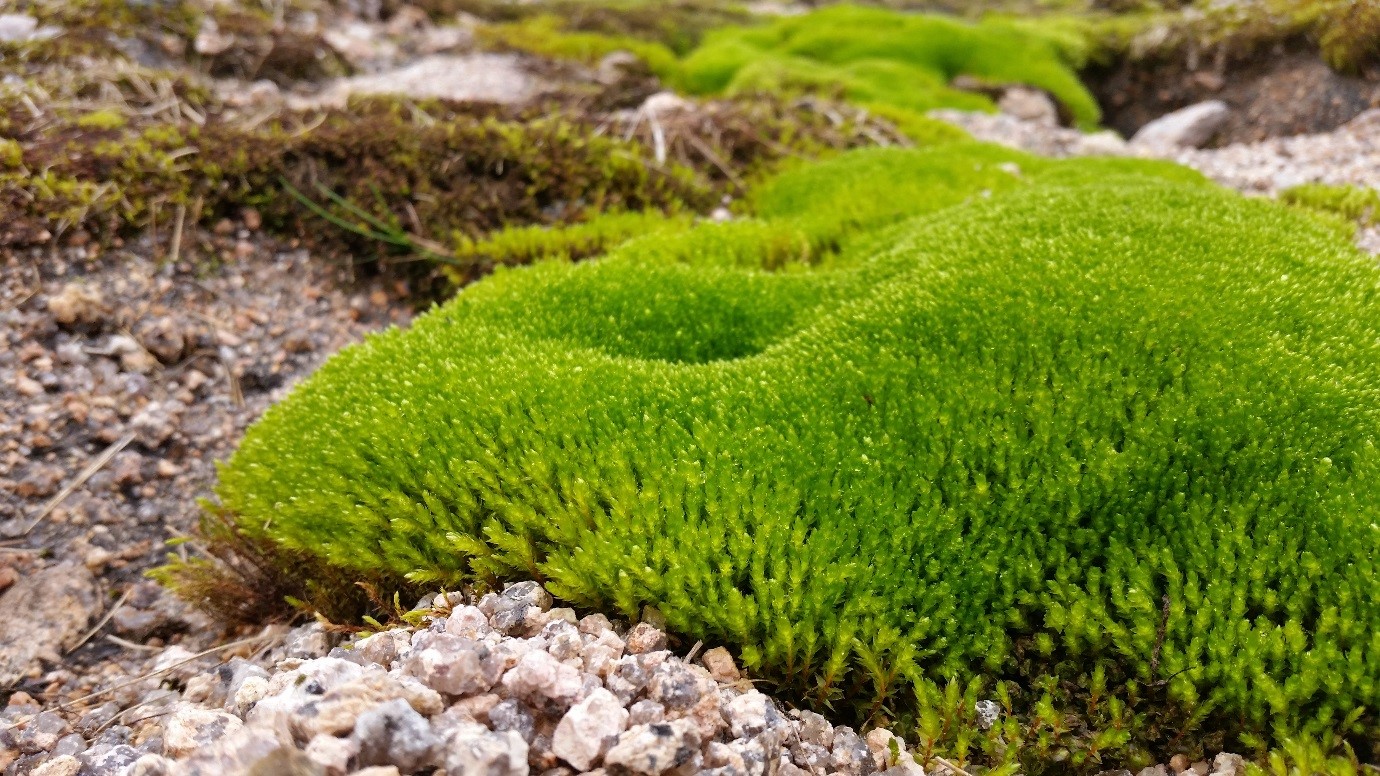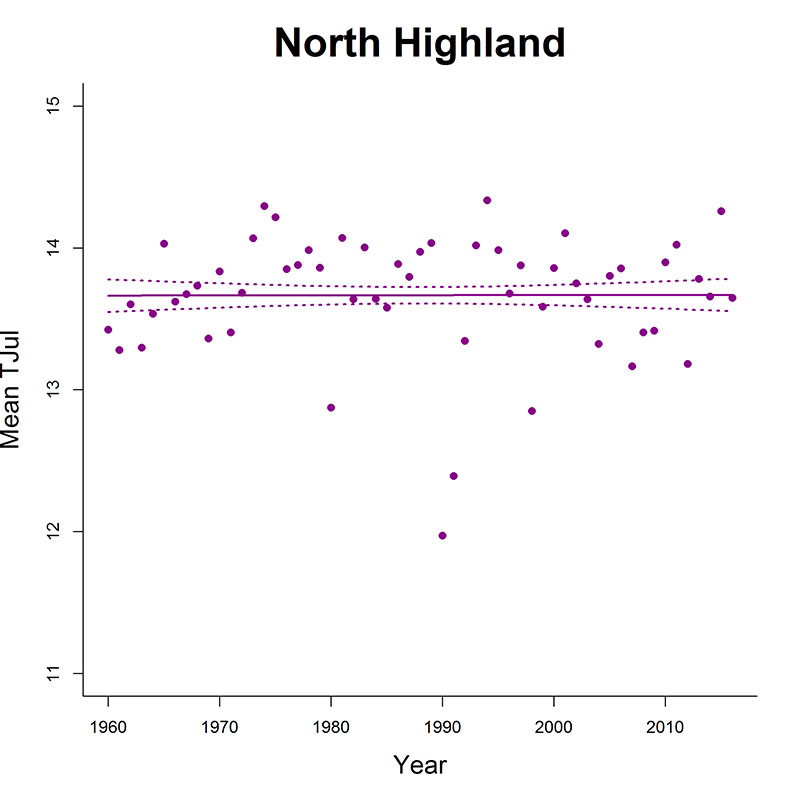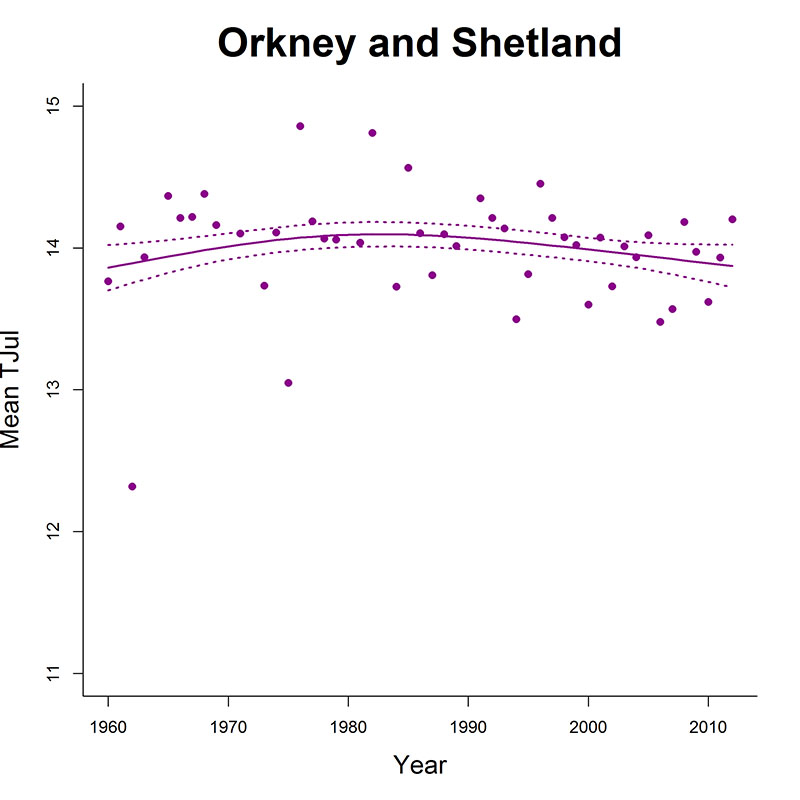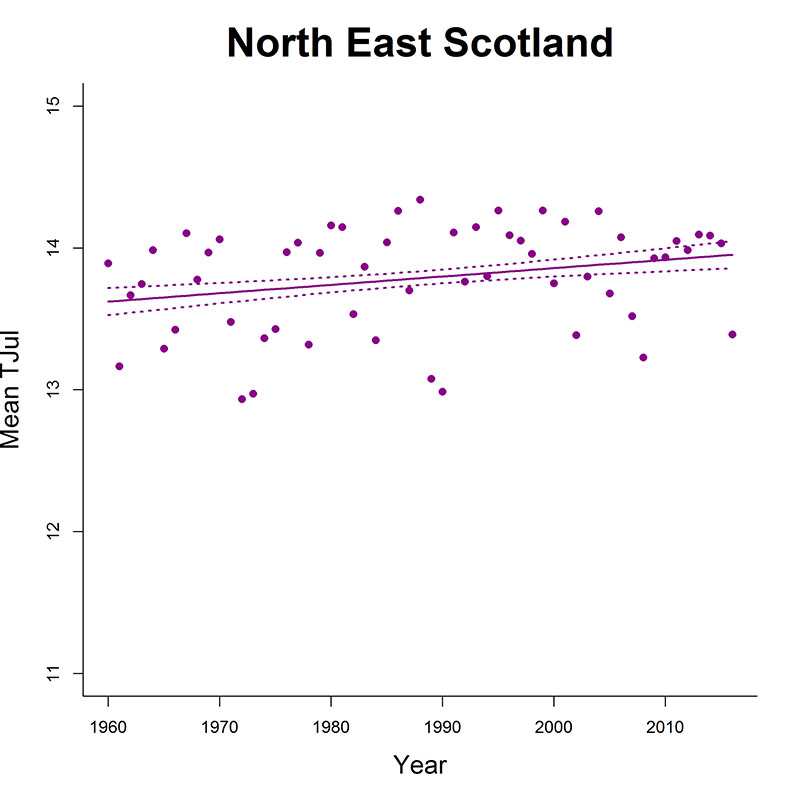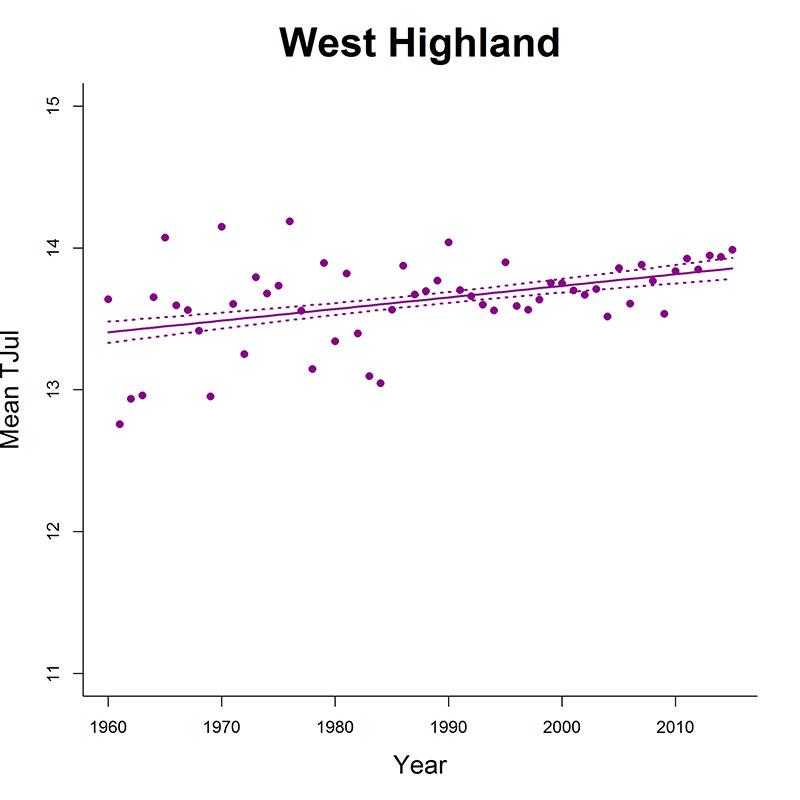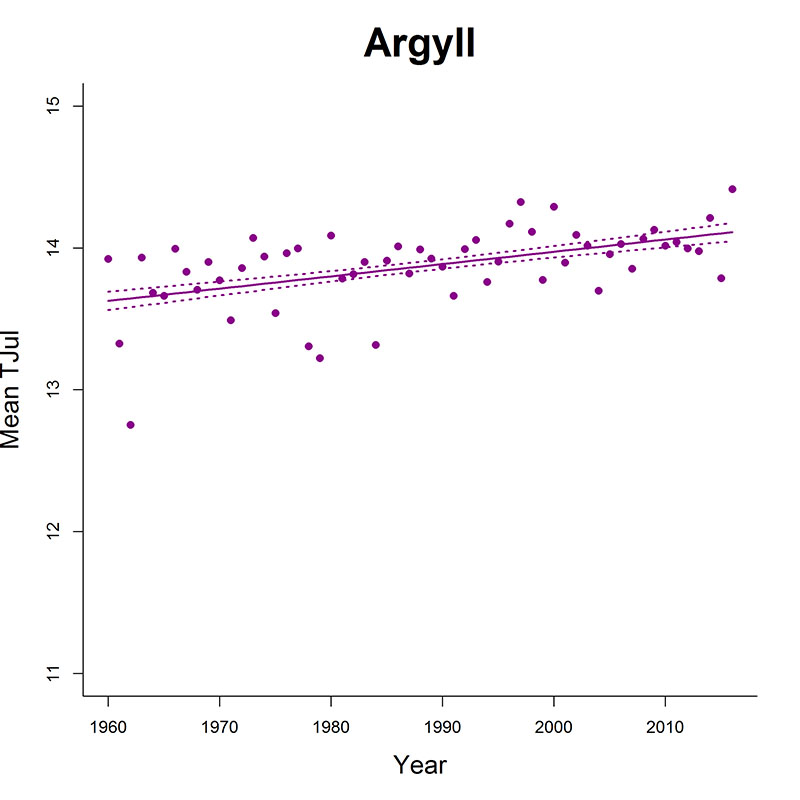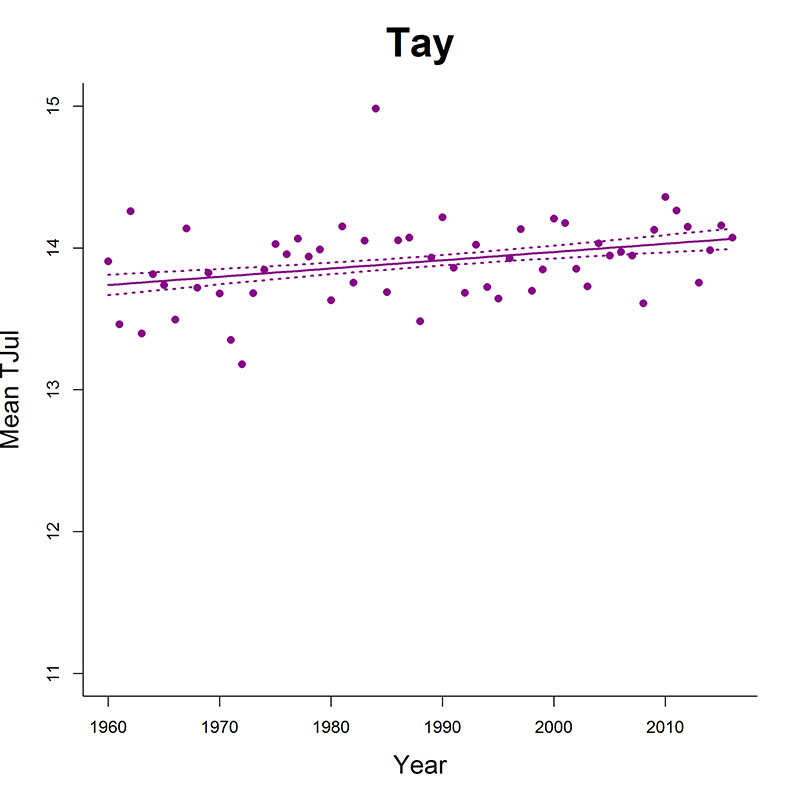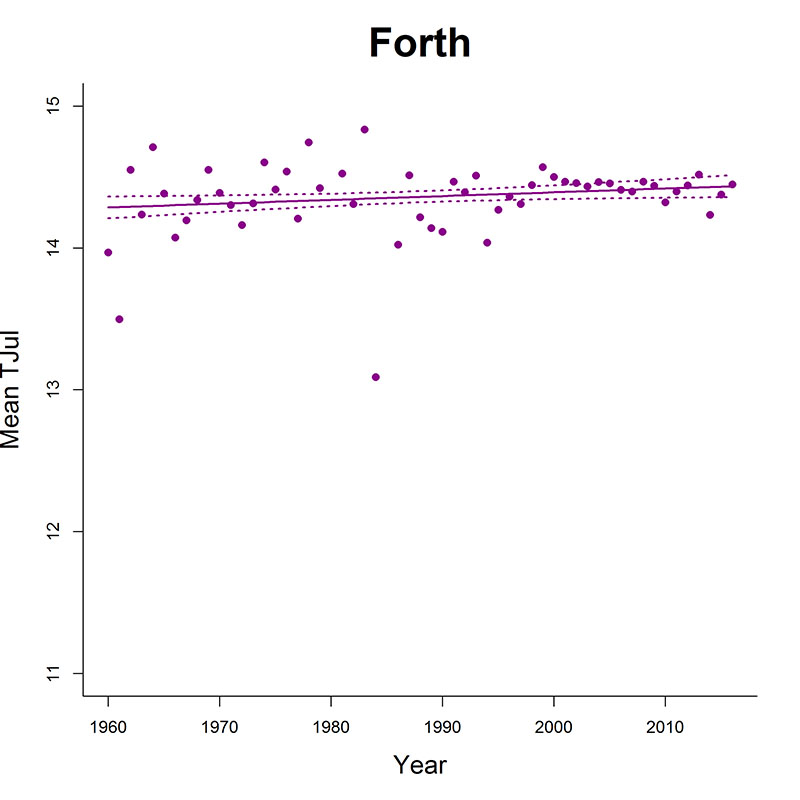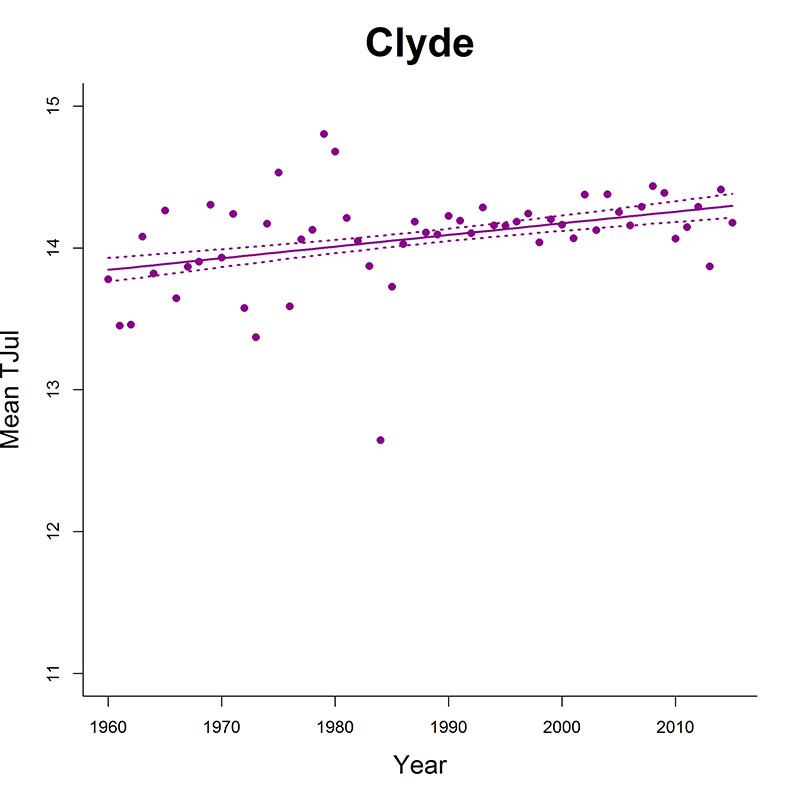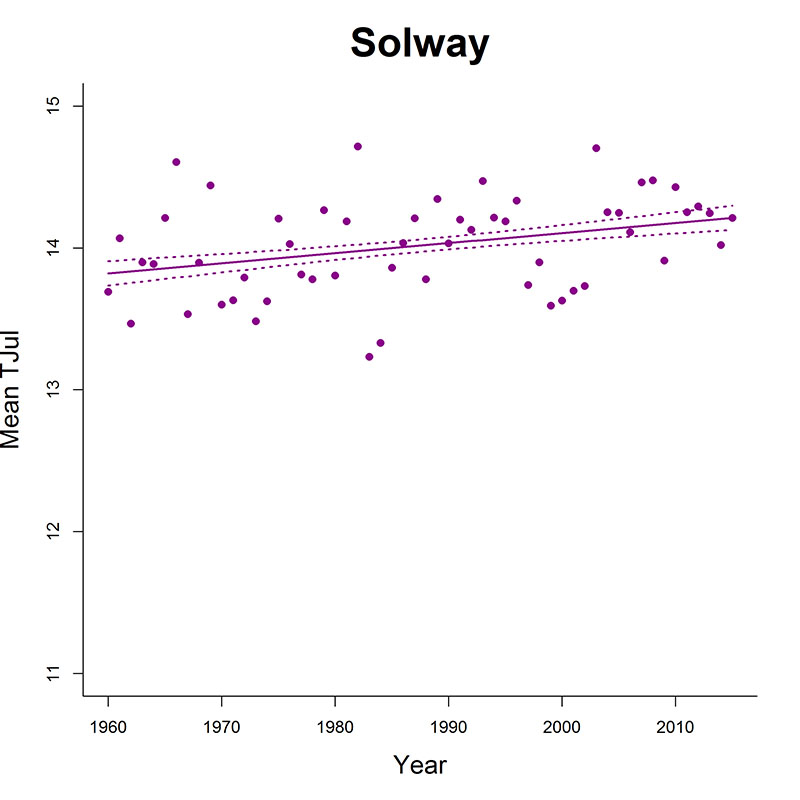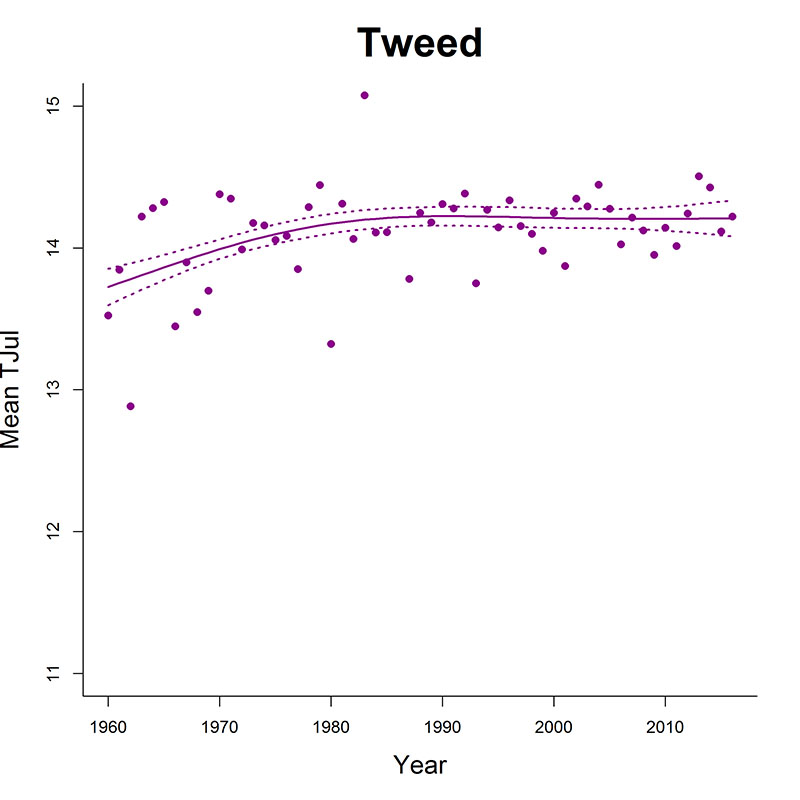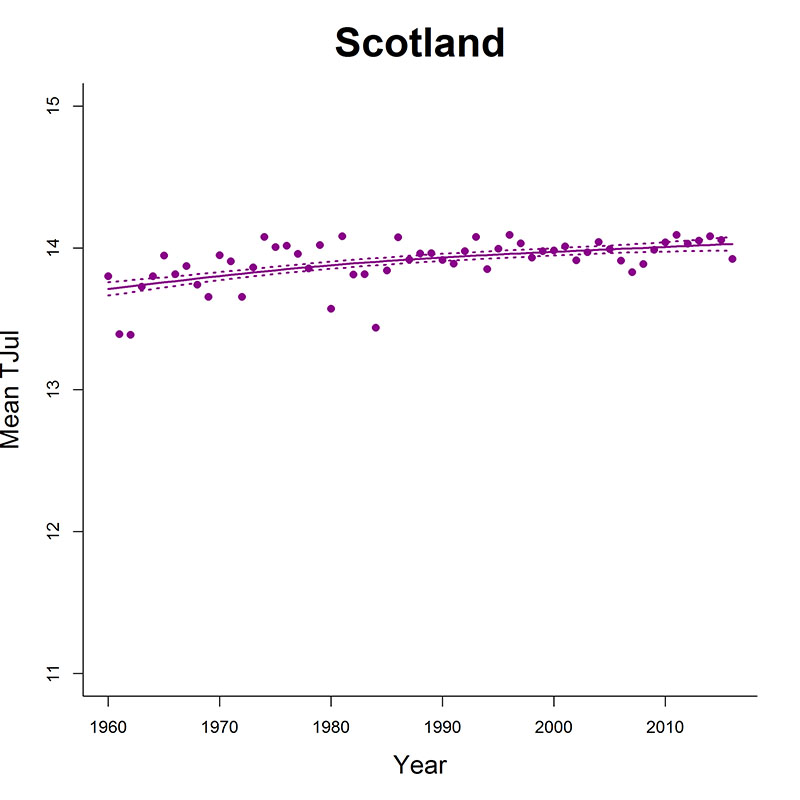What is it?
This indicator has been created by linking bryophyte (moss and liverwort) records in the National Biodiversity Network (NBN) to information on the habitat preferences of the different species from BRYOATT. For nitrogen, each bryophyte has been assigned an indicator value between 1 (very infertile conditions) to 9 (very fertile conditions). The value for each year has been calculated by first averaging these indicators within each 10 km grid square and then averaging across them all to create a mean value for Scotland or for the individual sub-catchments.
Image 14b.1 Pohlia ludwigii (a snowbed species with a low summer temperature indicator value)
The high variability between years reflects the different effort of recorders in different places and in different years. However, the relatively narrow spread of the confidence intervals suggests that the trends shown are robust.
Explore the data
Click on image to view the Bryophyte Summer Temperature data
North Highland
Orkney & Shetland
North East
West Highland
Argyll
Tay
Forth
Clyde
Solway
How do I interpret the data?
A rise in the mean indicator value provides good evidence that bryophytes of warmer climates are becoming more common in Scotland. This increase in mean score could reflect land use change, as bryophytes of open habitats might be expected to have higher scores. However, the changes likely reflect the increasing summer temperatures observed in Scotland in recent decades.
For the sub-catchments, six of the sub-catchments produced well-fitting statistical models, suggesting that trends were relatively uniform across the country. The six were Argyll, Clyde, Solway, Tay, Tweed and West Highland. The absence of a significant trend in North East Scotland, North Highland and Orkney and Shetland may indicate that warming is having less impact on bryophyte communities in northern Scotland.
Who is responsible for this indicator?
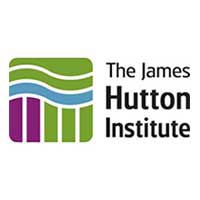
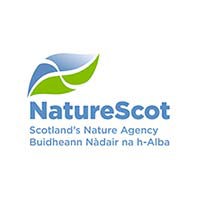
This indicator has been prepared by the James Hutton Institute and NatureScot.
Adobe Acrobat Reader is the free, trusted leader for reliably viewing, annotating and signing PDFs.
Download Adobe Acrobat Reader

